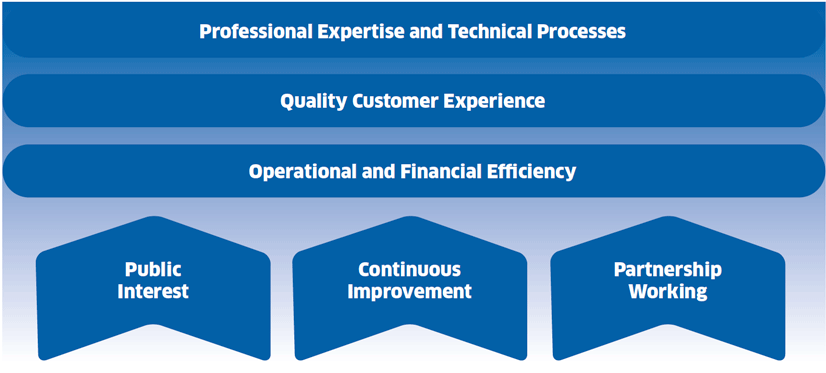Building standards performance framework: April 2021
Key performance outcomes used to monitor the work of building standards local authority verifiers.
This document is part of a collection
1. Introduction
The building standards system in Scotland was established by the Building (Scotland) Act 2003. The system is intended to protect the public interest by setting out the standards to be met when building work or a conversion takes place, to the extent necessary to meet the building regulations. The public interest is a critical success factor in terms of ensuring compliance with regulations and, above all, keeping the public safe.
The objectives contained in the 2003 Act are:
- to secure the health, safety, welfare and convenience of persons in and about buildings and others who may be affected by buildings or matters connected with buildings
- furthering the conservation of fuel and power, and
- furthering the achievement of sustainable development.
Scottish Ministers appoint verifiers and considerations for their appointment include qualifications, competence, accountability to the public and impartiality. At present the 32 Scottish local authorities (LAs) are appointed for their own geographical area.
Verifiers provide independent checking of building work at design and construction stages. Their main functions are granting building warrants and accepting completion certificates.
Appointment of verifiers 2005
The verification system was launched on 1 May 2005 and Scottish Ministers appointed verifiers up to 2011. Verifiers were required to submit an annual 'balanced scorecard' to the Building Standards Division (BSD) of the Scottish Government.
This resulted in positive progress and a stronger focus on customer service but did not provide a consistent approach to monitoring and measuring performance.
Appointment of verifiers 2011
LAs were reappointed as verifiers on 1 May 2011 for a further six year period. This was on the understanding that a new performance framework be put in place to improve the quality, compliance, consistency and predictability of verification activities.
The performance framework built on previous achievements and aimed to improve levels of customer engagement and compliance with the building regulations, particularly during construction. The framework was supported by a revised balanced scorecard, continuous improvement plans and a range of new Key Performance Outcomes (KPOs) (nine in total).
The performance framework was introduced from May 2012. It has been measurable since October 2012 and applies to those applications for building warrants and amendments to building warrants received on or after that date. It was developed by BSD and supported by Local Authority Building Standards Scotland (LABSS). It sought to address a wide range of actions and behaviours which, between them, demonstrate a strong customer-focused service. It allowed the assessment of building standards performance outcomes over a range of key national objectives.
Appointment of verifiers 2017
BSD commissioned Pye Tait Consulting to undertake research in 2015 to evaluate the performance of LAs in their role as verifiers. The aim was to inform Scottish Ministers in the lead-up to the next appointment of verifiers from May 2017.
The research identified various considerations including the scope for further improvement of the framework. This view was shared by BSD and LABSS.
The framework has been reviewed by BSD in partnership with LABSS and Pye Tait for introduction with the appointment of verifiers from May 2017.
The structure of the framework remains based on the three core perspectives:
1. Professional Expertise and Technical Processes
2. Quality Customer Experience, and
3. Operational and Financial Efficiency.
The two cross-cutting themes 'Public Interest' and 'Continuous Improvement' remain and are supported by a third theme 'Partnership Working' (previously covered under KPO7). This reflects the importance of working collaboratively, for example, through industry engagement, benchmarking, peer review and sharing of best practice.

Graphic text below
Professional Expertise and Technical Processes
Quality Customer Experience
Operational and Financial Efficiency
- Public Interest
- Continuous Improvement
- Partnership Working
Contact
Email: buildingstandards@gov.scot
There is a problem
Thanks for your feedback